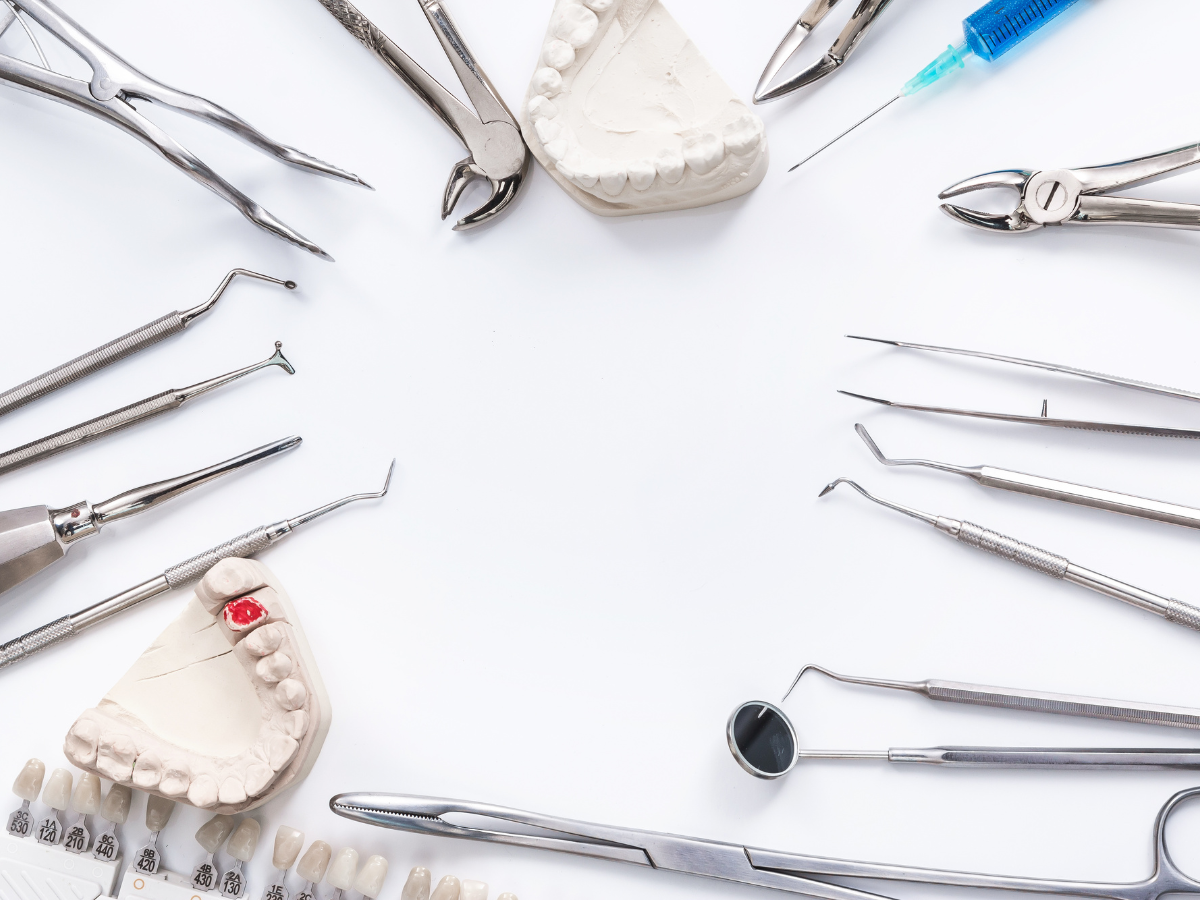Dental Instrument Types and Names
Diagnostic tools consist of three of the most commonly utilized instruments. It includes tweezers, an explorer, and a dental mirror. Diagnostic gadgets are the most important equipment in dentistry.
Dental Instruments Names: X-rays of the Teeth
X-rays are another way for you as a patient to learn the names of dental devices. In dentistry, X-rays of the teeth are common pieces of equipment that are frequently located in the clinician’s own room as well as a separate space. In the dental clinic, an intraoral X-ray and an OPG X-ray (orthopantomogram) are typically performed in separate rooms.
The OPG X-ray is the name of the dental device used for the secondary X-ray in the dental clinic. Usually, this is done in a different room. Also referred to as the extra oral dental X-ray, it is the reverse of the intraoral X-ray. The panorama is another alternative name. The dentist can use the X-ray to help identify the patient’s tooth count (i.e., there might be more teeth than should be). It will display the teeth’s positions for braces and other orthodontic treatments, as well as the implant treatment plan.
Syringe for Water and Air
This gadget, which goes by the name of one of our dental assistant instruments, produces both air and water. This gadget can be used by the dental assistant to inject water or air into the patient’s mouth. Some people find it comfortable to see and feel air-water syringes, while others may feel uncomfortable because they feel like too much water is being forced into their mouth. Raise your hand if this occurs. This indicates to the dentist that you need to discuss your treatment with them (clearly, it’s a little difficult to talk about!). The dental nurse can easily change or adjust the water for you.
The air is frequently used by the dentist to dry the teeth. This makes any calculus much more noticeable because it can be difficult to see due to the tooth’s moisture content.
Tools Used in Surgery
Teeth are extracted with surgical forceps. Depending on how they are going to be used, they can take many different forms. It can grasp the tooth structure thanks to its jaw-like beaks. An easy and pleasant way to grab objects is provided by the forceps handle, which is essential when applying forces. After being sterilized, the forceps can be used again. Depending on the tooth to be extracted, the forceps’ form varies. Milk teeth are extracted using children’s extraction forceps, which are smaller in size and shape. During oral surgery, some tools are utilized, such as elevators and retractors. The bundle comes with both curved and straight lifts. This tool facilitates tooth structure luxation and increases the visibility of the surgical site. The little head elevator is mostly used to remove root formations. In oral surgery, the periosteal elevator helps elevate soft tissues. These tools minimize unintentional damage to the modified structure of oral tissues and apply controlled stresses to the tooth structure. The surgical category also includes the suction tips. Slow volume for saliva removal and high speed suction for blood removal.
Operational Equipment
Tooth fillings are a component of oral surgery procedures. The cavity on the surface of the tooth is filled with the specific filling material. The tools include filler placement, condensation, and cavity preparation. The restorative ingredient does not become sticky due to the special material utilized to construct the composite filling devices. The composite set comes with finishing tools and a plastic instrument. The device can withstand high temperatures with dimensional modifications.
Instruments that Rotate
High-speed dental equipment powered by electricity are called rotary instruments. High-speed burs and finishing devices are part of it. The burs have diamond-coated heads and are composed of stainless steel. The cutting of bone is accomplished with a few carbide burs. The diamond burs come in a range of forms and sizes. The spherical burs aid in cavity preparation and tooth structure removal. The cavity floor is prepared in part by the inverted cone burs. The rotary files for endodontic treatments are among the other rotating tools.
Tools for Orthodontics
Mal occluded teeth can be treated with orthodontic therapy. By applying forces, it modifies the tooth’s position. Orthodontic implements come in a variety of forms, such as applicators, cotton pliers, straight probes, and band removal tool forceps. These days, cotton pliers are utilized for intraoral retrieval of small objects as well as for putting cotton rolls for isolation. Similarly, two tapering beaks with sharp cutting terminal ends characterize a wire cutter, also called a pin and ligature cutter. The tip of the pointed end is used to cut stainless steel ligatures and tiny surface wires (less than 0.015 inches).
When practicing dentistry, the choice of tools is crucial. Always purchase long-lasting, high-quality tools. Accidental injury during dental treatment is avoided by switching out the tools after a predetermined amount of time.
Dental Instruments Names: Conclusion
The following list includes some of the names of dental instruments names that are used in dental surgeries. Please let us know if visiting the dentist causes you any worry. We will take you step-by-step through any procedures and are pleased to explain them. Additionally, we have films below that help demonstrate techniques. You’ll frequently notice that the actual treatments are not all that horrible! You shouldn’t and won’t experience pain at the dentist in 2022. Local anesthesia has advanced significantly, and you shouldn’t have to endure pain or discomfort while receiving treatment. and lastly, we have laughing gas, often known as nitrous oxide, to help you relax while undergoing therapy. The building and rooms are equipped with nitrous oxide pipes! The nicest part is that you can drive home after your treatment (after waiting 15 minutes) because it’s incredibly easy, quick, and effective. Please see the skilled staff at Texla Dental hospital. Make an appointment with us right now to avoid stress.

